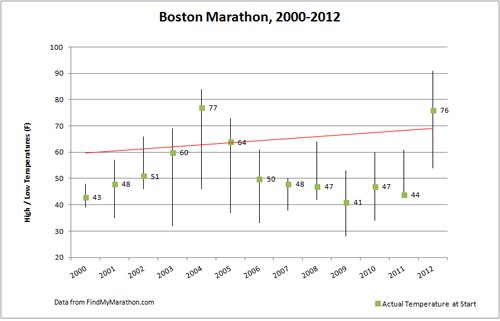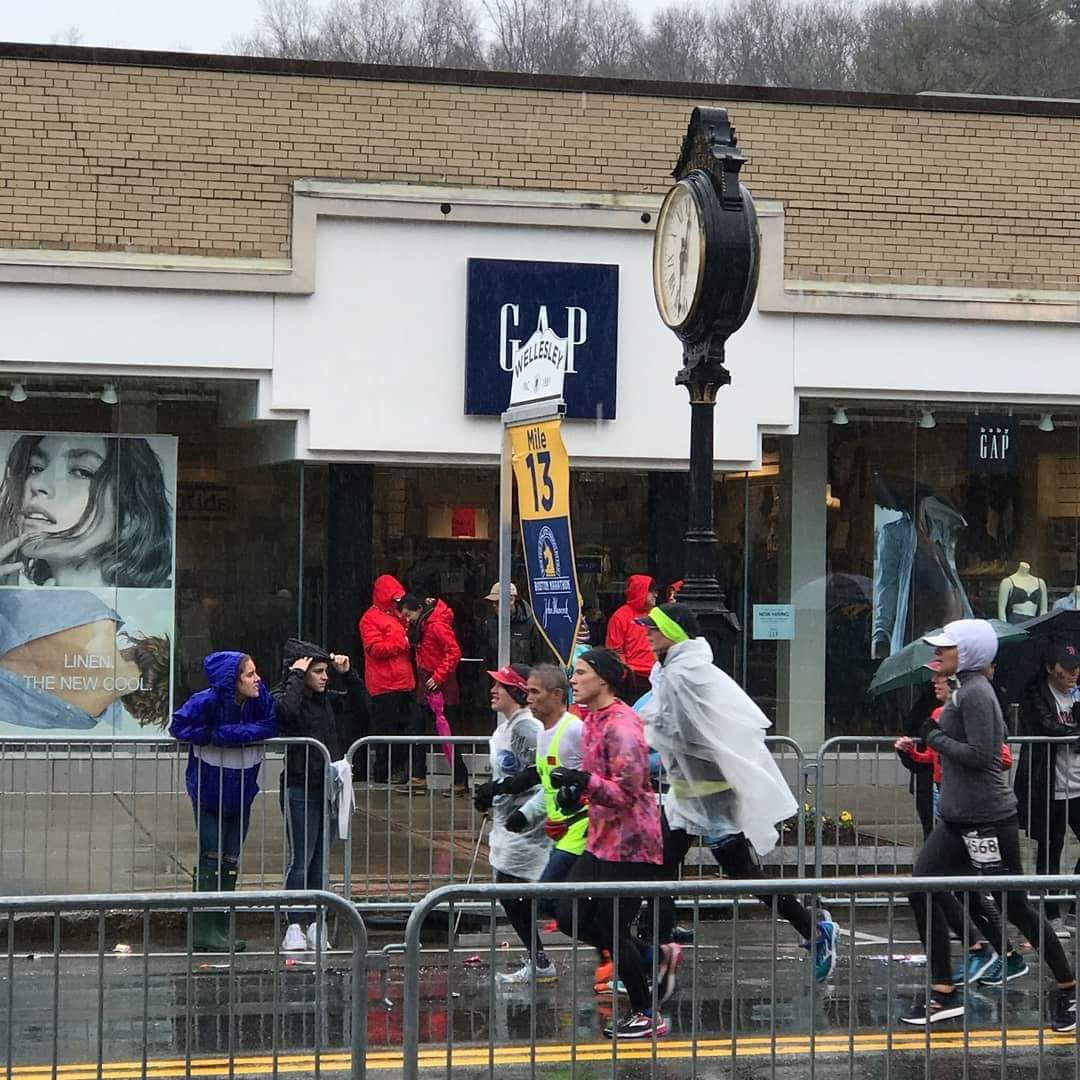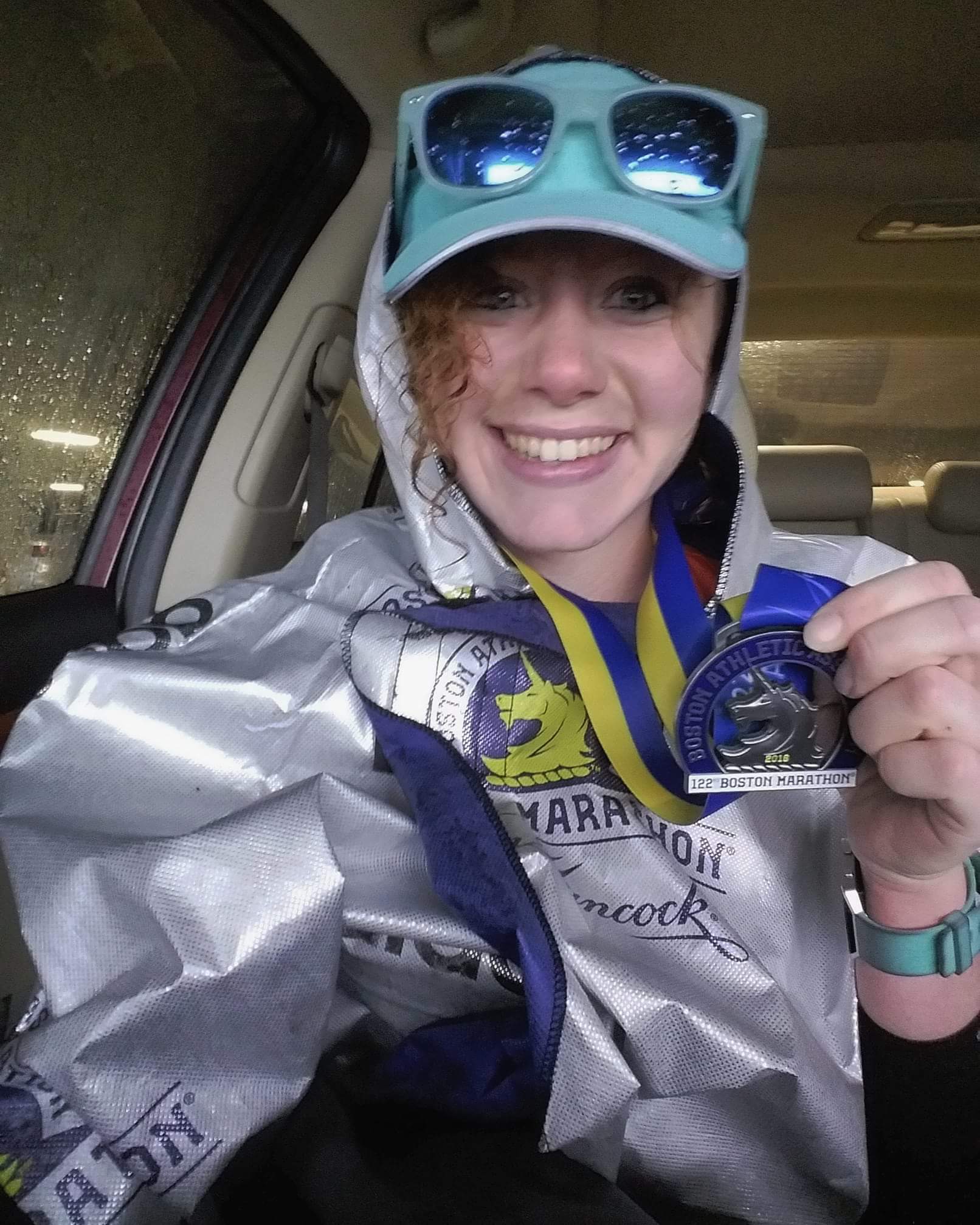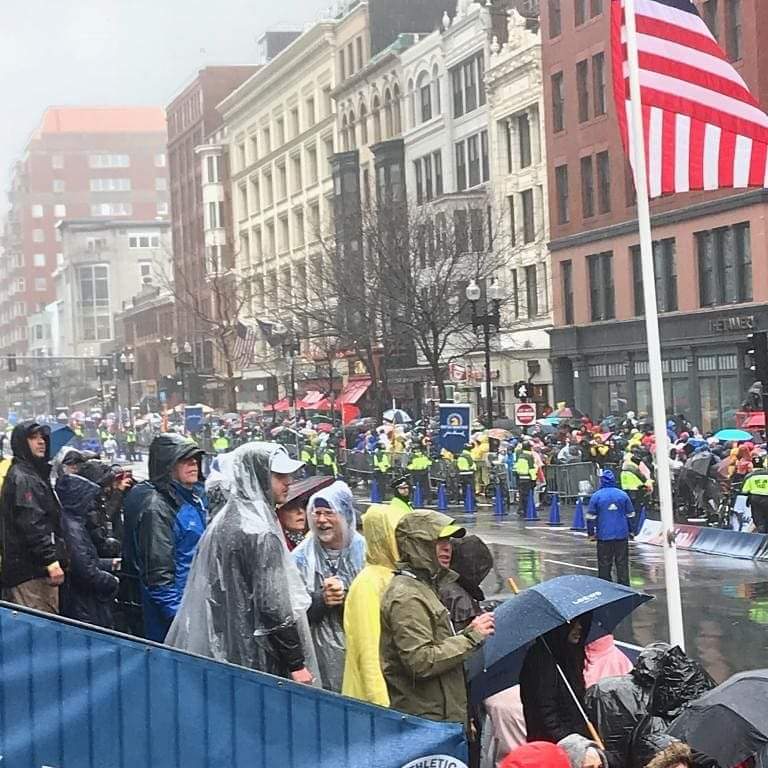The Boston Marathon is regarded as one of the most iconic road races in the world. From its signature turns and hills, to the sprawling crowds, running “Boston” grants entry to an esteemed club of the most “wicked runnahs”. While running 26.2 miles is no small feat, runners in the 2018 Boston Marathon may have earned themselves extra bragging rights due to its record breaking conditions. Being a 2017 graduate of the UMass – Lowell Atmospheric Science program, I hear constant remarks about the forecasts “weather people make”… In that same thought, I am also a marathoner and can promise no one would wish those conditions on even their worst enemy.
Running my first 3 marathons in the late summer and early autumn left me spoiled — the weather was glorious and New England scenery was beautiful. Winter marathon prep was daunting and while I checked off the 22 mile long runs, 60+ mile weeks and speed workouts at the local track, my life revolved around the daily forecast. Through the days of the January cold snap, and the parade of March Nor’Easters I told myself “there is no such thing as bad weather only bad clothing”, laced up and hit the road.
In late February — I ran my final marathon before Boston, the Hyannis Marathon. Marked by onshore winds and heavy rain along the oceanfront course, I remember feeling extra drained as I sloshed my way to the finish line with a new personal record of 3:20:50 (the thought of warm, dry clothes was very motivating). Ironically, the Hyannis Marathon was perhaps the greatest mental prep I could have had before an identical day in Boston.
As the #CountdownToBoston approached the close, anticipation of Marathon Monday’s forecast grew. I had envisioned a perfect 57° day with partly cloudy skies and a nice tailwind for my first Boston – and in typical New England fashion we got snow, rain and unseasonably cold temperatures. The forecast was bleak and the Boston Athletic Association sent out multiple warnings to prepare and how to recognize hypothermia.
The 5:30 wake-up call for Marathon Monday was accompanied by reports of snow at the start line, steady rain at the finish, and temps in the high 30s. The howling winds added insult to injury and kept wind chills to an almost unbearable low.
The Athlete’s Village in Hopkinton was a muddy mess, and with some having a nearly 2 hour wait until their wave started, staying warm and dry seemed to be more of a challenge than the run itself. Winds were bouncing the snow off the tents right onto the runners and race officials. At 10:00 AM, Wave 1 crossed the start line into a 20 mph headwind and bone chilling temp of 37° — the coldest start in 30 years. I was watching radar as lines of showers and embedded downpours set up along the course and crossed my fingers in hopes they would magically disappear. 

By 10:25 I was crossing the start line with Wave 2 dressed in my poncho, hiding behind people who made a good shield against the wind. My intentions in wearing the poncho were good – stay dry for a few min until I could warm up and we part ways around mile 5. As luck would have it I started in a downpour which lasted for about 15 min (the poncho lasted for about 10 min)…the sound of cheers from a soaking wet but enthusiastic crowd were muffled by the ponchos and trash bag jackets flapping in the breeze.
I had banked myself about 90 seconds thanks to the generous downhill start in Hopkinton and was prepared to lose it battling the wind and rain – by Mile 6 my shoes were already heavy, my arms red and raw and I had nothing left to do but keep running (or swimming I guess). Reports of SE gusts near 45 mph were coming in and the UML Weather Center students were out and about taking their observations at every 10k mark to keep runners reminded of what an awful day we were out in! 
As I finished Wellesley and approached the infamous Newton Hills, I noticed a lot of people dropping out – presumably due to biting cold or flat out exhaustion from fighting an uphill (and windy) battle. More downpours came through between hill #2 and #3 turning the roads into streams, and my quest for a Boston finisher’s medal into a race to get dry.
By Cleveland Circle I was nearing the finish and was in need of some sort of fuel. Unfortunately, the energy gels I had with me required the use of my hands to open and they were so stiff and frozen I had to go without. Around Mile 23 I wanted to do a final check of my time before making the final push to the finish – the rain knocked out my watch and the official time keepers along the course. 
On an average day, runners can see the Boston skyline around Mile 23 to give them a boost to get to the finish. The clouds are rain were so thick, my first glimpse of the iconic cityscape was the Citgo sign near mile 25 – I honestly couldn’t see it until I was nearly on top of it but knew it was go time once I was there.
Through the final mile and 385 yards, I was numb, soaked to the bone, rallying through steady rain, a slapping wind to the face and high fiving as many people as I could (couldn’t feel my hands either but it’s the thought that counts).
Crossing across the Finish Line was euphoric, and even though my lips were blue and I was probably showing early signs of hypothermia I felt as happy as I had been all day. The 90 second time bank I had was lost and my finish was ultimately 7 minutes slower than my original goal of 3:20:00. Temps ultimately capped out in the low-40s and with rainfall totals measuring in inches, the run from Hopkinton of Boston felt more like a swim.
There was truly no good way to prepare for what the weather brought that day – nothing was waterproof enough but the race went off without a hitch. As true Boston “runnahs” we take it with a grain of salt and have fun with it knowing the crowds and spirit of race day kept us going.

With over 30,000 runners registered and projected to start, the finish totals took a hit thanks to the extreme conditions. Dropouts in the race nearly doubled (4,000 total) in 2018 compared to 2017 which brought blazing sun and 75°. Cases of hypothermia were abundant and Finish Line medical tents were at capacity treating runners who gave their all through much of the day.
There really is no other race like Boston and I eagerly await 2019 – the weather couldn’t possibly get worse…maybe I’ll hold my tongue on that one!

